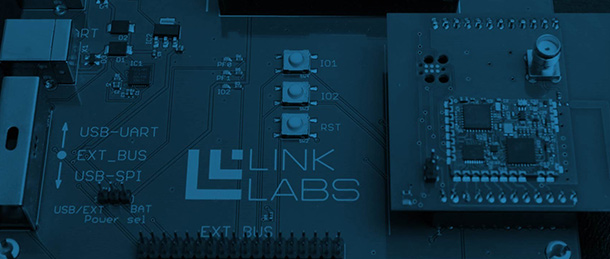Machine to machine (M2M) solutions have been in the market place for a long time, solving specific business operational problems such as asset tracking and remote management. In recent years, they’ve also moved into other business and consumer sectors and become strategically important for many organisations. As we increase the number of connected machines and devices and move towards creating more and more M2M solutions, we’ll also require different connectivity options.
There are already contexts and applications where short range 802.11 technologies or high-power cellular solutions are not a good fit. In these situations, M2M connectivity options that combine low- power and long-range present huge opportunities. Any potential M2M solution that requires extended battery life is an example — parking, structural integrity monitoring, and agriculture monitoring and management are all obvious candidates. Currently, there are a number of different low-power and long-range solutions in the market – and Link Labs is one of these. Established two years ago and working from their office in Washington D.C., Link Labs is an extensive team of highly skilled engineers who have developed a patent pending low-power long-range M2M solution for an increasingly diverse marketplace. Beecham Research’s Saverio Romeo recently met with Brian Ray, Link Labs CEO, to learn more about his company and report for M2M Now on their position in the market.
Saverio Romeo: Brian, what’s your view on the current state of development of the Internet of Things vision?

Brian Ray: M2M isn’t a new concept. Industrial and manufacturing organisations know the value of sensor data and use that data for optimising and automating processes. The Internet of Things is a broader vision that aims to bring M2M concepts into the everyday lives of people. That said, it’s sometimes difficult to show how Internet of Things concepts bring value to everyday end-users – and not just to companies wanting internal improvements. Organisations often ask for the end-user’s data and, in doing so, they enter our digital lives. In return, end-users want to see a return on that exchange in terms of added value for them – but it’s not necessarily straightforward to clearly demonstrate that value. Therefore, the road to the IoT vision is still a long one. However, at the M2M communications level, and up the chain at the business level, there have already been major developments and there’s still much more to come. The pace of technological development across every aspect of M2M is dramatic and it’s enabling new M2M applications that go far beyond just connectivity involving basic data transmission and simple value added services.
Saverio Romeo: From what you are saying, there is a lot to be proved in the B2C side. But, on the B2B side, the more M2M-centric part, that’s expanding rapidly across different sectors. What does Link Labs offer to this current market landscape?
Brian Ray: Our offer is composed of two parts. The first part involves bringing together our radio modules, gateways, wireless protocol, and data services and selling these as a rapidly deployable solution to companies who want to build their own networks. We call this our Connectivity Solutions offering and it allows companies to quickly capture IoT business opportunities. The second part involves taking all our technologies and applying them on a wide scale. Both involve synchronous, duplex, low latency and low power communications and, in a nutshell, we’re able to deploy a long-range M2M wireless network that’s also very efficient in terms of its power consumption and communication capabilities.
Saverio Romeo: What are the specific advantages of having such a wide area, low-power network solution?
Brian Ray: Using cellular solutions for certain applications is simply too expensive and too power hungry. Therefore, you need an alternative that delivers all the positive features of cellular – but at lower cost and at lower power. Therefore, our focus is on applications where the return on investment isn’t high enough to justify the use of cellular while additionally the power budget also isn’t suited for cellular solutions. Good examples of those situations are water meters and
parking sensors.
Saverio Romeo: What are the advantages of using the Link Labs solution?
Brian Ray: The Link Labs solution offers all the advantages of a long-range and low-cost M2M network. The cost of a typical network endpoint is less than $25. With our solution, you can cover large areas with a single gateway radio receiving and transmitting small bits of data. Our system also allows connections through multiple walls, therefore delivering much greater penetration into buildings. Our radio modules achieve long-range network connectivity through short (<100ms) bursts of data that draw only around 50 mA. The rest of the time, the system draws only a few µA. Consequently, our modules can work for many years, keeping both initial costs and maintenance overheads low. Our system also ensures high levels of security by encrypting bi-directional data from the end point throughout the data system. The solution is suitable for worldwide deployments, supporting radio hardware and compliant MAC architectures for use in 915 MHz ISM bands, 868 MHz, and 433 MHz.
Saverio Romeo: In relation to your long-range solution, what’s your business model?
Brian Ray: At the moment, our long-range network is being deployed in the Washington DC metro region with over 37 sites that cover more than 6 million people. However, we want to expand our coverage and we want to do that through collaboration. Therefore, we’ve adopted an open business model in order to encourage partners to build networks with us. Link Labs supports customers with ‘ready to build and run’ long-range low-power networks in a variety of ways. We provide the entire solution including back-end services that are ready to go on the
air. It’s also very easy to integrate our technology with sensor hardware and other existing IT solutions.
Saverio Romeo: Which sectors and applications do you expect will benefit most from Link Labs technologies?
Brian Ray: Currently, Link Labs is focused on the B2B space and we help organisations that want to develop networks for their internal business functions. We have several projects involving on-demand response applications such as smart grid control. The current electrical grid design allows utilities to send electricity to homes on a one-way path. Smart grid concepts allow for two-way communication, so there’s a more efficient transmission energy path and better integration with renewable energy sources. We are also working on municipal water metering networks in order to enable automatic readings and transmit data to a central location. In addition, we are working with an access and security company for building access control and we also have a project in smart agriculture. Through our long-range network, embedded sensors in the ground transmit information about the soil and the cultivation state back to a central location. Farmers can then understand the places that need water and the places that don’t. This allows agriculture companies to save up to 70% of their historic consumption of water.
Saverio Romeo: Which business models are best
leveraged using Link Labs solution? Can you give us some examples of clients being able to monetise a Link Labs solution successfully?
Brian Ray: The use of our Connectivity Solution is not always tied directly to revenue generation, but more to the optimisation of processes that are foundational to the economics of the business. For long-range wide area networks, Link Labs is working with a company called AirFinder that provides asset tracking solutions for smart city applications. AirFinder offers low-cost tracking devices with a 1 year or more battery life and those devices work on a Link Labs network. AirFinder – using our network – therefore provides value to customers through those devices. The customer purchases the device and the service and there’s a direct link to revenue generation through the Link Labs network. Another project involves a large smart parking provider. We are transitioning their infrastructure and services to our network and they’ll eventually run their parking activities on a Link Labs network. The number of these case stories will increase as our network deployment expands across US territories.
Saverio Romeo: Interest in wide area and low-power network solutions has increased strongly over the last three years. Different unlicensed spectrum low-power network solutions and cellular-based solution such as LTE-M have contributed to that. Is the marketplace becoming too fragmented?
Brian Ray: Certainly, interest in low-power and long-range M2M networks is strong in the marketplace and there are several players using different technologies and different approaches. However, we are in an initial phase of development and the market will eventually select the best solutions. We believe that we have a technology that is ahead of the competition because it is very flexible, reliable, easy-to-use, synchronous and duplex. Regarding LTE-M, it will take some time before it will come to the market place. Link Labs however is already there and growing rapidly.
Saverio Romeo: Apart from the main technological features discussed previously, what other elements put Link Labs in a position of
competitive advantage?
Brian Ray: Our solution has dynamic MAC scheduling that allows gateways to re-allocate uplink versus downlink resources frame-by-frame. Another important feature involves message acknowledgment. Thousands of nodes can be acknowledged per frame, saving end-node power and extending node operational life significantly. And, decentralised gateways can perform network processing locally, allowing less dependency on central server processing. Additionally, active interference avoidance enables up to 48 gateways to co-exist without interference. Finally, our patented technology is the result of real world experience out in the field by a world-class tech team. That team is an important part of our proposition and they’re able to support partners who want to deploy long-range and low-power networks.
Saverio Romeo: At the moment, Link Labs is obviously active in the USA – where else do you want to expand to geographically?
Brian Ray: Canada and the USA are our primary focus and we want to carry on deploying our network here to cover the entire region. However, we also have clients in Europe with France, Spain and the UK seeming to be moving the fastest towards long-range and low-power networking. We have strong interest too from Singapore, Hong Kong and India and are actively exploring partnerships in those countries. Local partnerships are going to be key for our geographic expansion.
Saverio Romeo: How will 2015 be for Link Labs? What milestones do you want to reach during this year?
Brian Ray: Currently, our customer base is doubling about every six months. We want to continue to grow with our customer base and continue to serve all of them extraordinarily well. In addition, we want to continue our network deployments and expand our footprint in other markets.
Saverio Romeo: And looking at the near future, towards 2020, what are Link Labs’ ambitions?
Brian Ray: We believe that the possibilities of our technology are almost endless. It can be used in water meters, smart parking, irrigation management and control systems, asset tracking, smart grid control, smart lighting, smoke detectors, fire alarms, and facilities management monitors. We also believe that our proposition is critically attractive in terms of costs. Our ambitions are to expand our offering worldwide, while simultaneously becoming the preferred long-range and low-cost M2M wireless network operator for the USA and Canada.
Brian Ray is the founder and CEO of Link Labs. Brian led the creation and deployment of Link Labs’ new type of long-range, low-power wireless networking solution which is transforming the M2M space. Prior to Link Labs, he led a team at the Johns Hopkins Applied Physics Laboratory which solved communications and geolocation problems for the US intelligence community. Brian is also a graduate of Oxford University, the US Naval Academy, and served for
eight years as a submarine officer in the US Navy.










